Learn
Other Minorities
African Americans Face Discrimination
Although the war brought economic opportunities to many Americans, economic discrimination remained a problem for African Americans who faced ingrained racism. During the 1940s, more than two-million African Americans migrated from the South to the North in search of jobs. However, one out of five potential African-American workers were unemployed at a time when the war industries were booming. In addition, 50% of all African American homes were substandard.
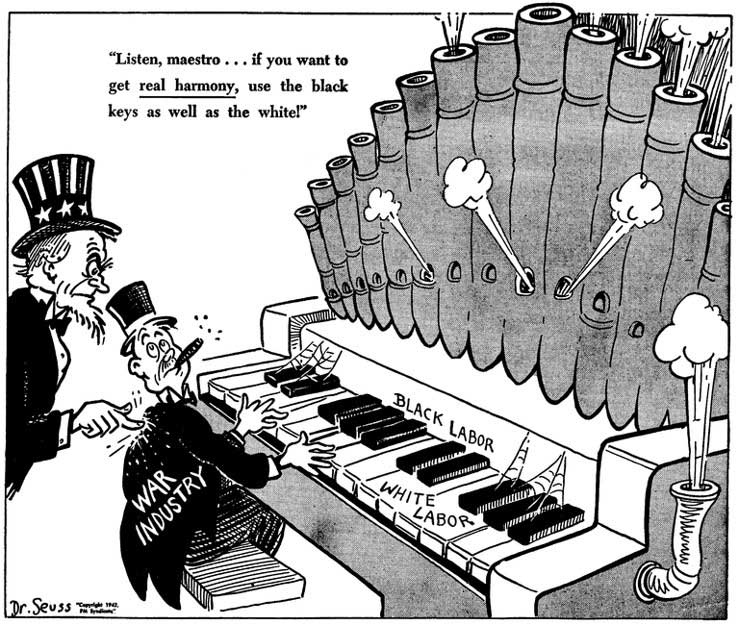
"Listen, maestro... if you want to get real harmony, use the black keys as well as the white!", published by PM Magazine on June 30, 1942, Dr. Seuss Collection, MSS 230. Special Collections & Archives, UC San Diego Library From: Dr. Seuss Collection, MSS 230
African Americans Face Segregation
Jim Crow laws made it very difficult for African Americans to get jobs in the war industry. They had to fight for integration.
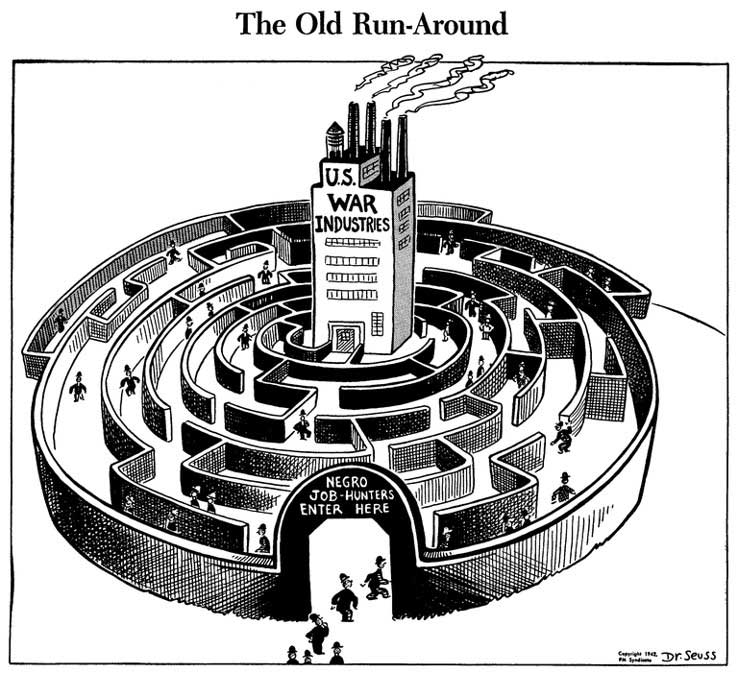
"The old run-around", published by PM Magazine on June 26, 1942, Dr. Seuss Collection, MSS 230. Special Collections & Archives, UC San Diego Library From: Dr. Seuss Collection, MSS 230
Soldiers and Segregation
American soldiers went off to fight Adolf Hitler, the supreme racist, and left behind ingrained racism at home. Black soldiers were segregated from white soldiers and, with a few notable exceptions, were given support roles rather than combat duties. African-American and white troops were strictly segregated until President Truman issued orders to desegregate the military in 1948.

African-American recruits in training. IRC, 2005. Image. Discovery Education. Web. 27 July 2014.
The Double V Campaign
There was work to be done just to convince many Americans that there was a problem with discrimination. For example, six out of ten white Americans thought that African Americans were satisfied with existing conditions. The "Double V" Campaign was started to fight discrimination in the U.S. during World War II. Double V = Victory against the Axis powers AND Victory in equality at home
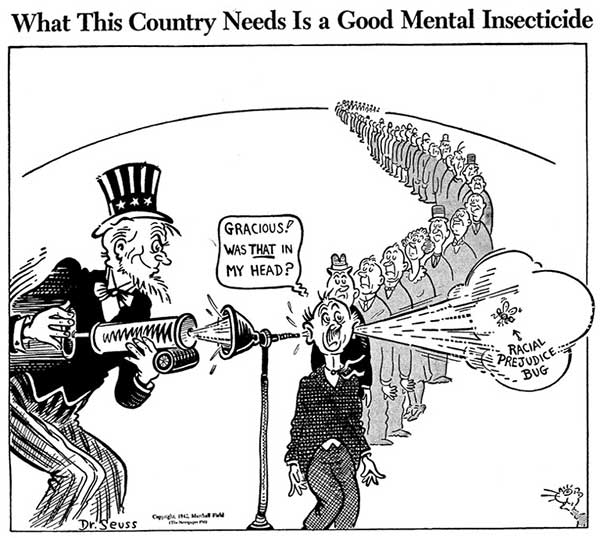
"What this country needs is a good mental insecticide", published by PM Magazine on June 11, 1942, Dr. Seuss Collection, MSS 230. Special Collections & Archives, UC San Diego Library From: Dr. Seuss Collection, MSS 230
During World War II when American soldiers went to fight in the Pacific and European theaters of war, Jim Crow segregation was the law of the land at home. Many racial groups did not have equal access to schools, housing, jobs, or places of public accommodation. Even the United States armed forces were segregated. The Pittsburgh Courier, the most powerful black newspaper of the time, mounted the Double V campaign at the suggestion of a reader.
Doors are Opened to Opportunity
The efforts of the Double V Campaign provided opportunities that would increase wealth in the African-American community during and after the war. Leaders like A. Philip Randolph fought to make a place for African-Americans in the labor movement. As a result of Randolph's efforts, President Roosevelt issued Executive Order 8802 to open jobs and job training programs in defense plants to all Americans "without discrimination because of race, creed, color, or national origin." More and more African Americans joined the growing middle class.
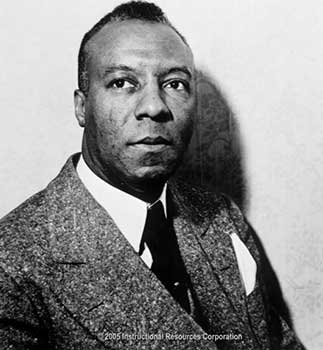
A. Philip Randolph (1889-1979) IRC; 2005. Image. Discovery Education. Web. 27 July 2014.
The Great Migration and the American Dream
Jackie Robinson was the first African American to play major league baseball.
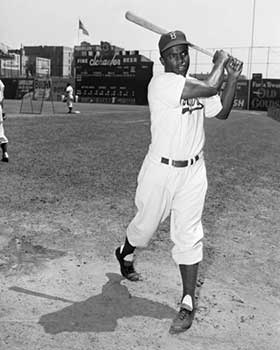
Jackie Robinson Swinging a Bat. Corbis. Image. Discovery Education. Web. 27 July 2014.
Mexican Americans
Mexican Americans were also victims of racial intolerance during World War II. This was evident in the "Zoot Suit" Riots. During the riots, American servicemen attacked Mexican American teenagers in Los Angeles in response to rumors that "zoot suiters" (fashion worn by some young Mexican Americans) had attacked several sailors. Violence continued for several days.
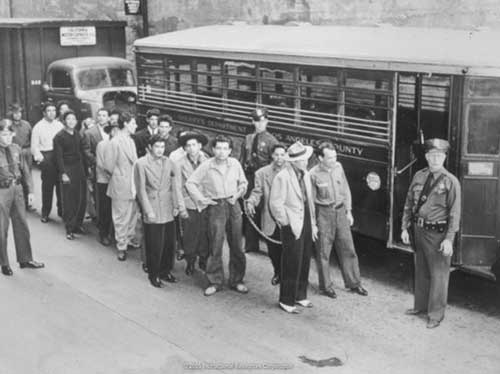
Alleged zoot suit rioters. IRC, 2005. Image. Discovery Education. Web. 27 July 2014.
Despite the discrimination faced by Mexican Americans, new programs were developed to provide opportunities during WWII. The Bracero Program provided employment opportunities to Mexican farm laborers, or braceros, brought to the U.S. to work in agriculture.
Native Americans
25,000 Native Americans joined the armed forces during World War II, and nearly 50,000 worked in war industries. One of the most unique contributions to the war was made by the specially trained Navajo Code Talkers. They helped the Allies stay one step ahead of the Japanese by using their unique native language to communicate in codes that were never broken. After the war, many Native Americans who joined the service lost a sense of their roots and did not return to their old way of life on the reservations.
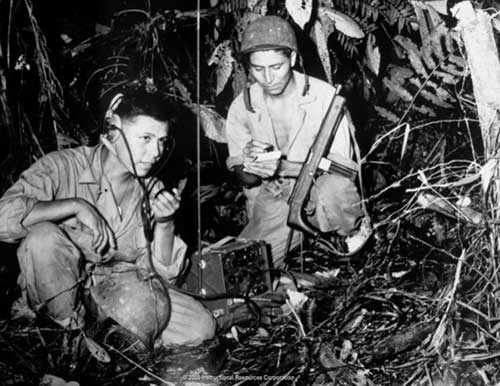
Navajo Indians serving in a Marine radio unit. IRC, 2005. Image. Discovery Education. Web. 27 July 2014.